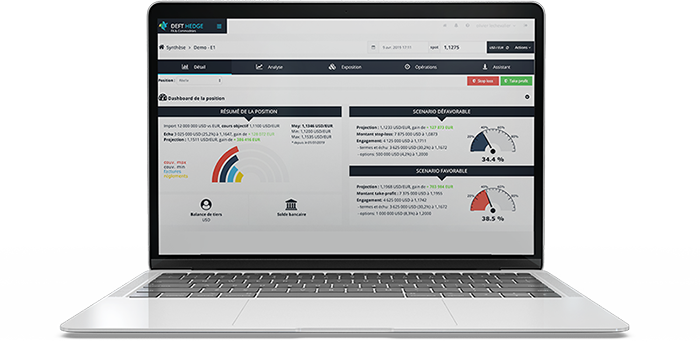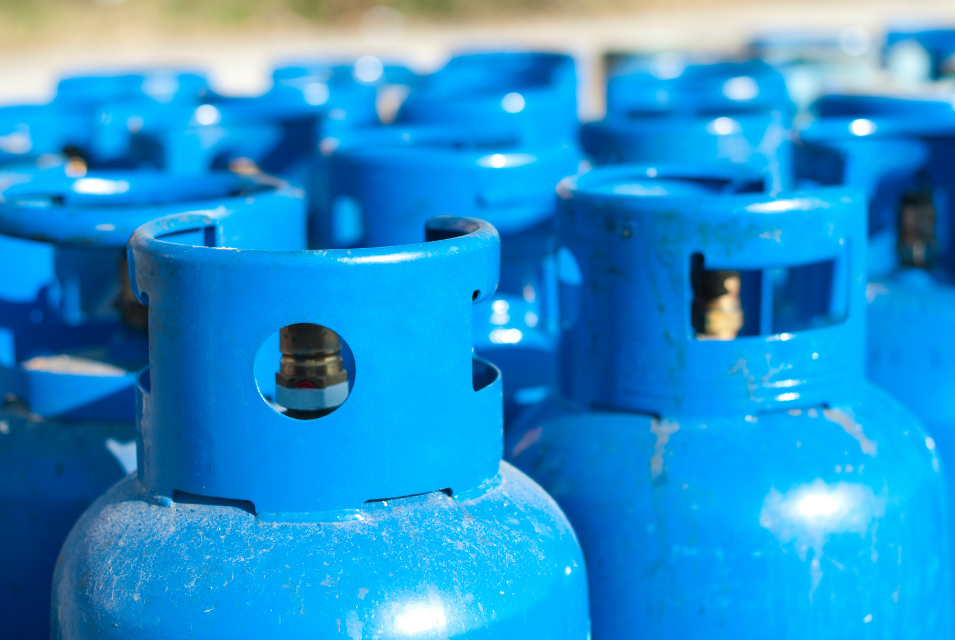Gas Prices:
Discover our solution!

In the commodities market, gas is one of the assets on which many transactions are conducted. Like other commodities, gas experiences fluctuations in its value due to the evolution of certain factors.
To assist businesses in managing their purchases and sales of commodities, including gas, DeftHedge now offers a comprehensive SaaS software solution tailored to their needs. To make the best possible investments in the gas market, it is also essential to understand all the mechanisms of this market.
We provide you with all the keys here to carry out the best possible operations in the gas market.
What are the steps to gas consumption?
In France, the natural gas consumption market is organized around four main sectors.
Gas Production:
Nationally, Total is the primary producer in the gas market. However, it’s important to note that gas production in France is very limited, accounting for only about 2% of the country’s total consumption. Gas supply in France comes from foreign production.
Gas Transportation
Once produced, the next step is transportation. Since the majority of gas consumed in France comes from abroad, this commodity is transported through pipelines or LNG carriers. The gas is then transported under high pressure through a transport network consisting of two main parts: the “high-capacity transport” network and the regional network.
Gas Storage
Between the transportation and distribution stages, gas needs to be stored. For this stage, two solutions are currently used: storage in aquifer reservoirs and storage in salt caverns. These storage networks, operated by various gas suppliers in France, help regulate the filling level and adapt to demand fluctuations.
Gas Distribution
Once these different stages are completed, gas is distributed directly to consumers through specific distribution networks. Managed by public services, these networks must be maintained to ensure secure gas delivery to consumers.
How does the gas market work?
Also known as gas exchanges, organized markets allow for virtual and physical gas trading. In these markets, the majority of transactions are carried out through short-term contract agreements.
While less common in organized gas markets, other types of contracts are still present in exchanges: spot contracts, futures contracts, or “Futures.”
As for natural gas pricing, it is conducted on the NYMEX (New York Mercantile Exchange) and the IPE (International Petroleum Exchange). In addition to these international markets, there are smaller national or regional markets:
- Gas market in France: The Point d’Échange Gaz (PEG) is the sole virtual marketplace in France for gas trading.
- Gas market in Europe: Based in the Netherlands, the Title Transfer Facility (TTF) is a marketplace that serves as the benchmark index for other European gas markets.
What factors influence natural gas prices?
Like other commodities, the price of gas is subject to many fluctuations. These variations are linked to the fact that gas prices are affected by various external factors.
Demand
The primary determining factor in gas price fluctuations is weather and temperatures. During the winter season, heating and gas demand increases, leading to an uptick in demand and gas prices.
In addition to weather, economic conditions both nationally and globally play a significant role. If economic growth is weak, industrial production will be less intense, and overall gas demand will be directly impacted, leading to lower prices.
Why and how to invest in natural gas?
The commodities market is a constantly evolving market where it’s possible to make investments in various assets. Similar to oil, natural gas offers real advantages for investors.
Investing wisely in natural gas
Relatively easy to predict, natural gas appears as an interesting asset for investors. To enable businesses to make the best possible investments in natural gas, it is beneficial to use management tools like DeftHedge. With such tools, it is possible to access various criteria and information about the evolution of natural gas prices. Whether it is for buying or selling, it is important to consider the different factors that may impact the price of natural gas, whether in the short term or long term.
What are the main indicators to follow?
As we have seen, the price of gas is not linear and is influenced by various external factors. To determine the ideal time to make an investment in the gas market, it is important to closely monitor a multitude of criteria. The main indicators include:
- The economic situation of households and industries.
- Oil prices and coal prices.
- The value of the dollar.
In addition to closely monitoring these indicators, it is also important to consider the impact of speculative operations carried out by investors in the gas markets. To ensure precise monitoring of gas prices, it is essential to have access to maximum information on the various factors influencing the value of gas.
Supply
Gas price fluctuations are also due to geopolitical factors. Indeed, in the case of political instability in a producing country and potential conflicts between countries, the availability of gas can be significantly reduced. In crisis situations, gas prices tend to increase significantly due to the difficulty of sourcing.
Gas supply can also be impacted during maintenance of production, storage, or distribution infrastructure. This maintenance period leads to a halt in gas access, resulting in price increases.
Indicators
Historically tied to oil, gas is also influenced by changes in oil prices through Long-Term contracts. The effects on gas prices are particularly felt in the medium or long term.
Another factor directly influencing gas prices is the euro/dollar exchange rate. Like the price of a barrel of oil, natural gas prices are generally quoted in dollars and, therefore, their value fluctuates with exchange rate movements.

How will our commodity management software assist you in gas procurement?
Commodity management is a particularly complex activity that requires the use of efficient and tailored tools. To assist businesses in implementing their investment strategies in the commodity market, DeftHedge has developed its SaaS solution.
With this high-quality software, professionals can better manage their operations on various commodity markets and optimize their portfolio of transactions.
If you wish to track and invest in the copper or gas market, the DeftHedge software will be a valuable asset:
- Management and monitoring of gas price evolution
- Task automation
- Assistance in guiding your investment strategies
- Data centralization and security
- Improvement of financial gains
With its multiple features, our tool allows all types of businesses (SMEs, large enterprises) to manage their investments in the gas market effectively. Thanks to this tool, you will have access to precise information about the market and its price evolution, allowing you to adapt your strategy and protect yourself from financial losses.
To better anticipate the effects of your strategy on the commodity market, DeftHedge offers its “SmartStrategy” simulator. Based on specific information about your business and objectives, this feature will help you evaluate the effects of the strategy you wish to adopt. In your daily operations, the DeftHedge software will become an essential decision-making tool.
To minimize your financial risks and maximize your investment strategy in the gas market, DeftHedge is the ideal tool.Our team of experts is available to assist you in customizing the features and quickly mastering this commodity management software.
To adopt the best possible strategy in the commodity market, especially in the gas sector, do not hesitate to discover our SaaS solution and optimize your financial gains.
